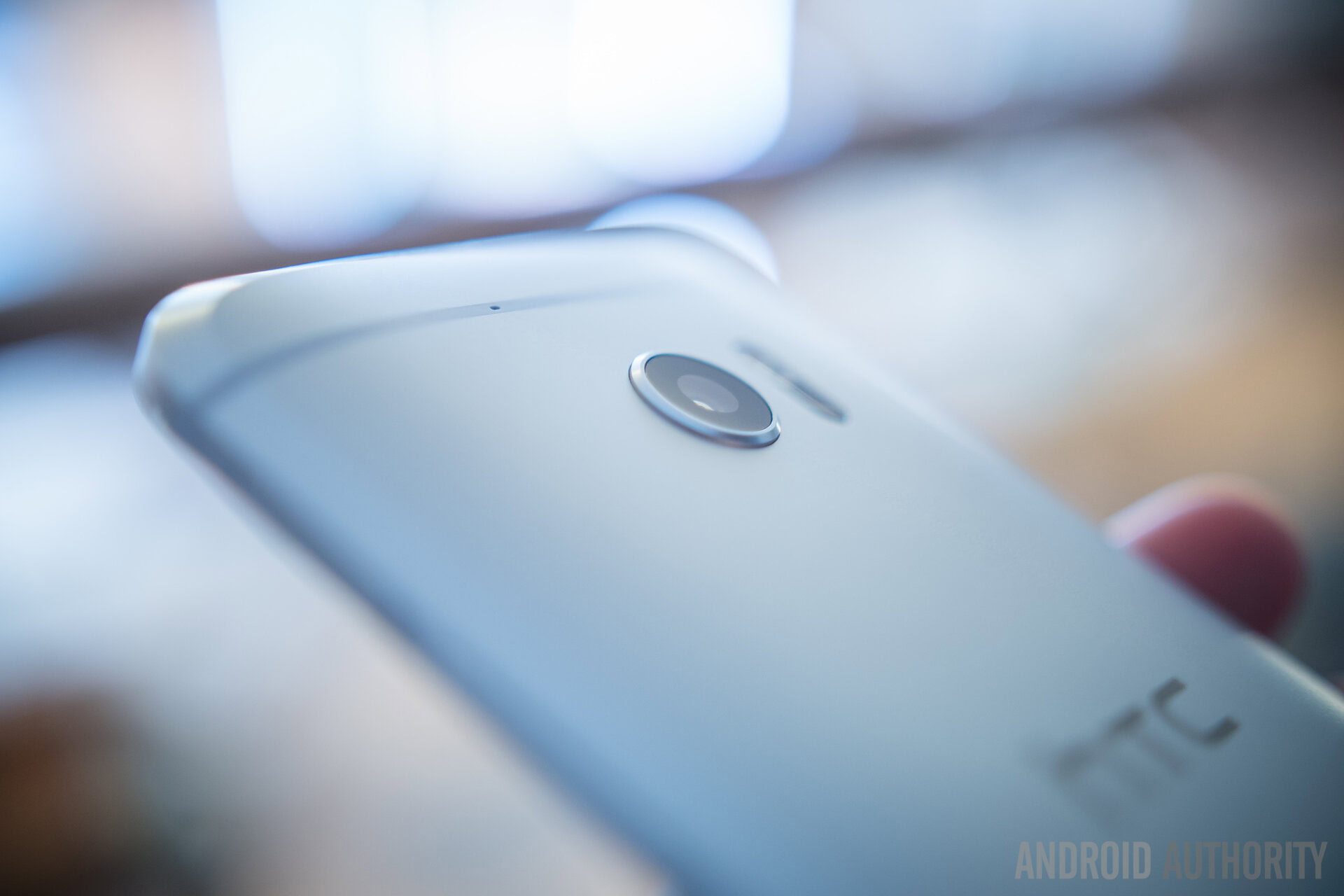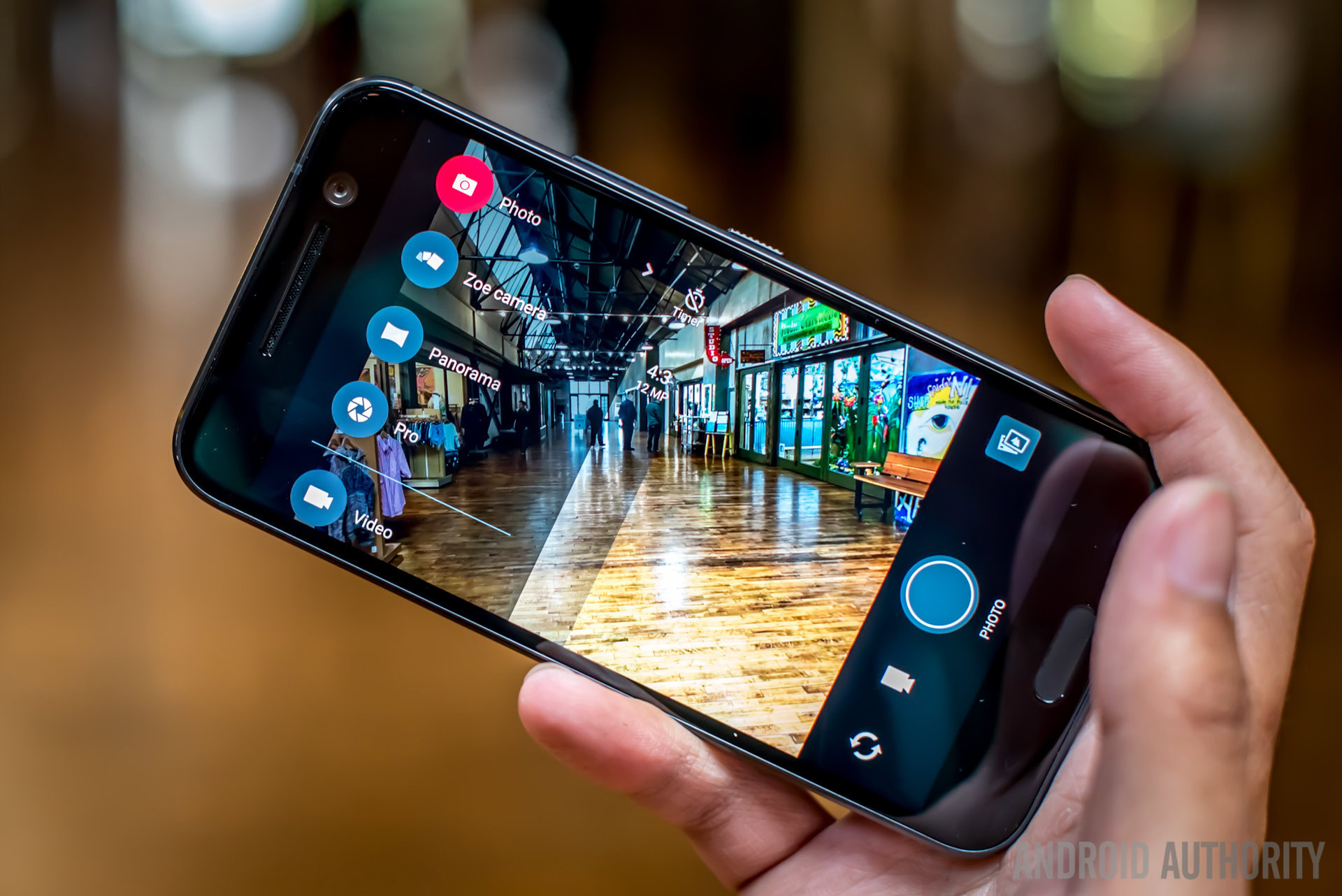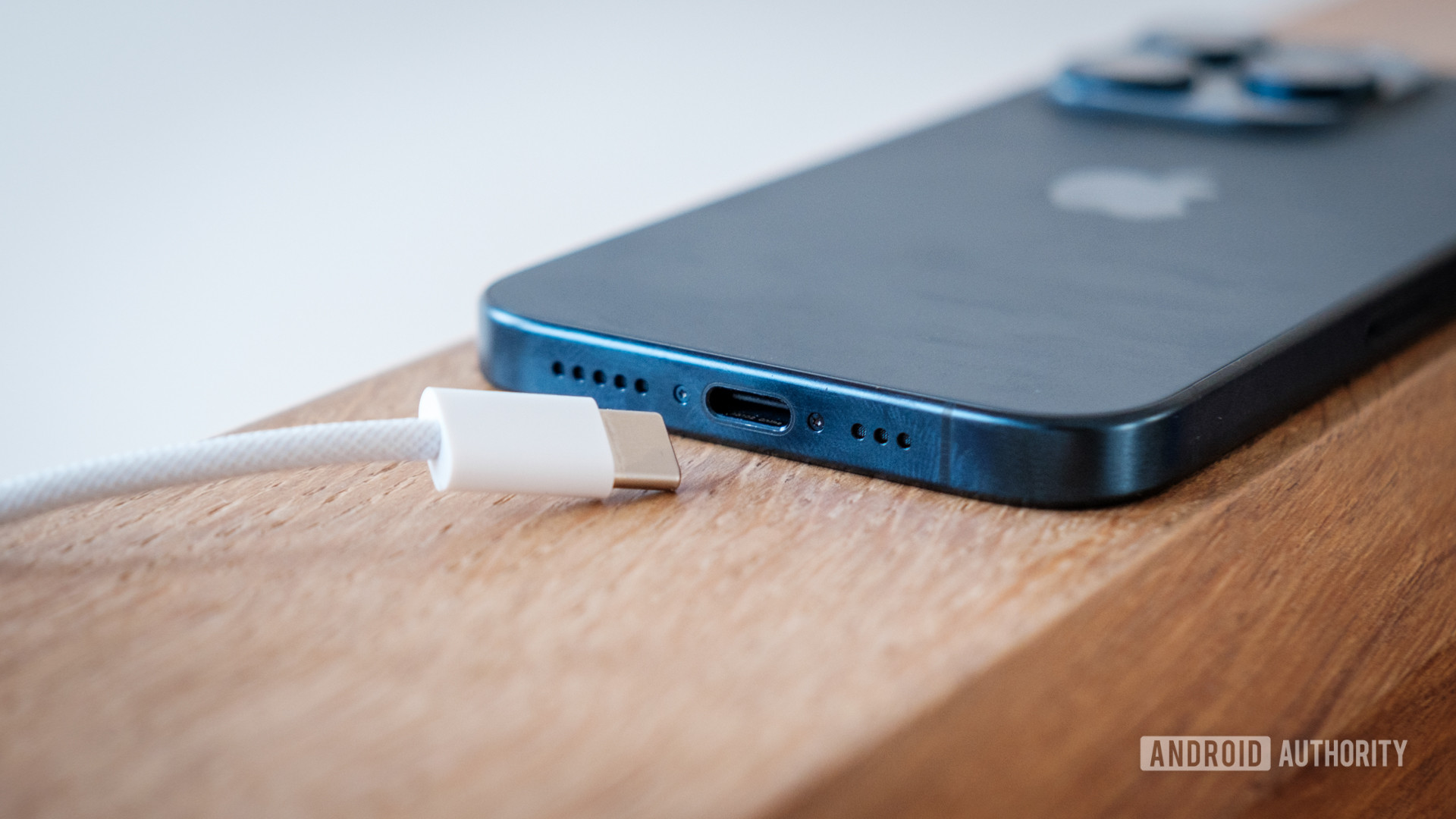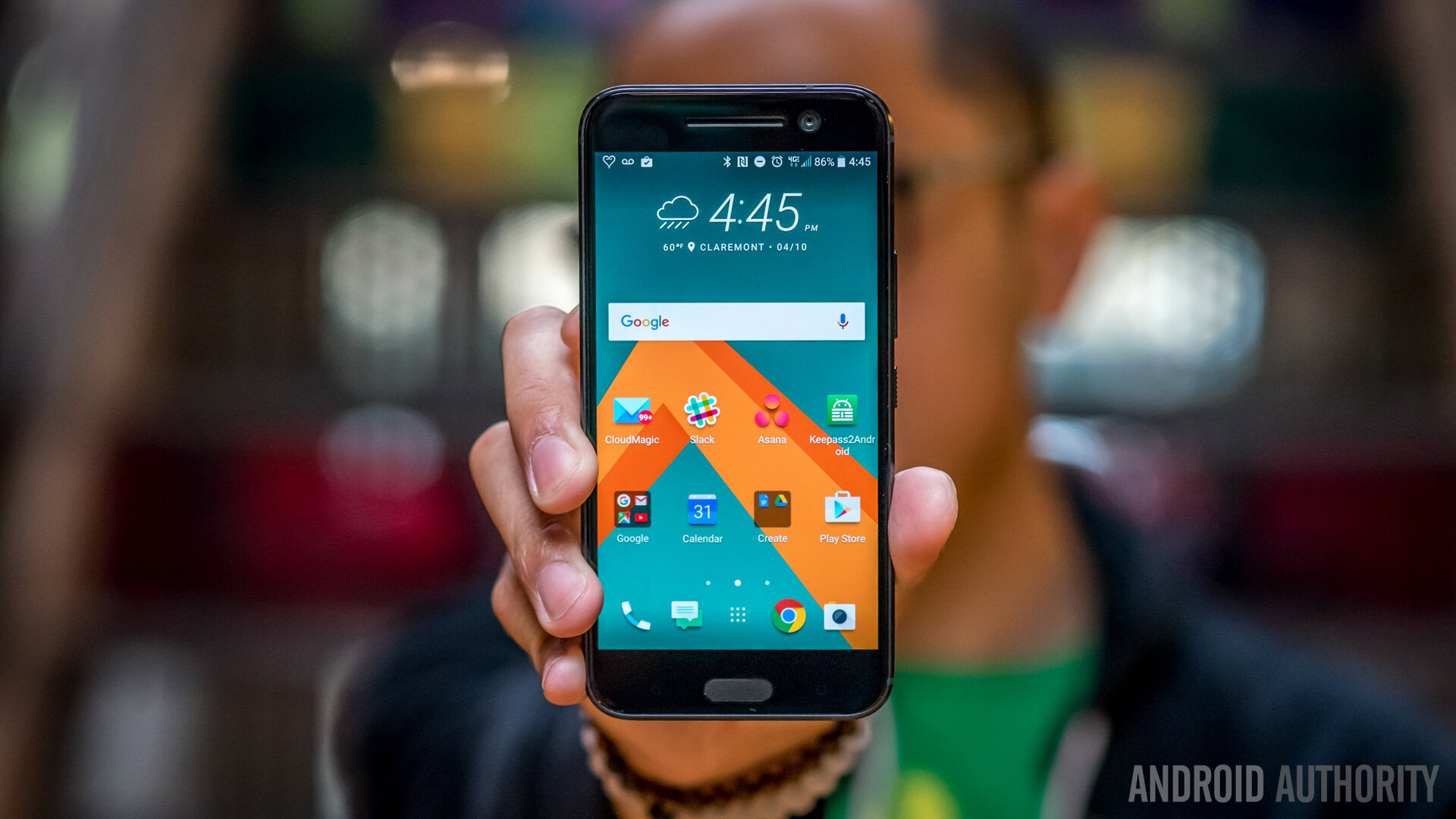Affiliate links on Android Authority may earn us a commission. Learn more.
Spec showdown: HTC10 versus the competition
Published onApril 12, 2016

Hardware certainly isn’t everything, but when you’re in the market for a high performance smartphone you’re almost bound to wonder how your hardware stacks up with the competition and if you’re getting value for money. Today we’re going to compare how the newly unveiled HTC10 stacks up, at least on paper, against rival flagship smartphones from Samsung, LG, HUAWEI, and Sony.
[related_videos title=”The Competition:” align=”center” type=”custom” videos=”684693,679576,675765,684612″]
Let’s dive right on into the display tech. While other manufacturers were relatively quick to hop on the Quad-HD resolution display train, HTChad kept a 1080p resolution for all of its previous flagships. This all changes with the HTC10 though, as the manufacturer moves up to a competing QHD Super LCD display, that will offer up that little extra sharpness to match the likes of the Galaxy S7 and the LG G5.
At 5.0 to 5.5-inches, the difference between 1080p and QHD is not massive, but it’s not a minor con that can be held up against HTC’s latest flagship any more. Pixels per inch calculations for 5.2-inch QHD and 1080p displays come out at 564 and 424 respectively, which are both right around that very roughly approximated 450PPI sweet spot for typical smartphone viewing distances. The more telling question will be to see how this resolution upgrade impacts on performance and battery life, which we’ll find out once we get to our full review.
Fortunately, HTChas managed to pack in a suitable sized battery. The handset features a 3,000mAh cell, which stacks up well against the Galaxy S7 and S7 Edge’s 3,000 and 3,600mAh sizes. It’s also slightly larger than the LG G5’s 2,800mAh and the Xperia X Performance’s 2,700mAh batteries.
| HTC 10 | Galaxy S7 | LG G5 | Xperia X Performance | HUAWEI P9 | |
|---|---|---|---|---|---|
Display | HTC 10 5.2-inch LCD 2560x1440 resolution | Galaxy S7 5.1-inch Super AMOLED 2560x1440 resolution | LG G5 5.3-inch LCD 2560x1440 resolution | Xperia X Performance 5.0-inch LCD 1920x1080 resolution | HUAWEI P9 5.2-inch LCD 1920x1080 resolution |
SoC | HTC 10 Snapdragon 820 | Galaxy S7 Snapdragon 820 / Exynos 8890 | LG G5 Snapdragon 820 | Xperia X Performance Snapdragon 820 | HUAWEI P9 Kirin 955 |
CPU | HTC 10 4x 2.2GHz Kryo | Galaxy S7 4x Kryo / 4x Samsung M1 + 4x Cortex-A53 | LG G5 4x 2.15GHz Kryo | Xperia X Performance 4x 2.15GHz Kryo | HUAWEI P9 4x Cortex-A72 + 4x Cortex-A53 |
GPU | HTC 10 Adreno 530 | Galaxy S7 Adreno 530 / Mali-T880MP12 | LG G5 Adreno 530 | Xperia X Performance Adreno 530 | HUAWEI P9 Mali-T880MP4 |
RAM | HTC 10 4GB | Galaxy S7 4GB | LG G5 4GB | Xperia X Performance 3GB | HUAWEI P9 3GB/4GB |
Storage | HTC 10 32GB/64GB with microSD | Galaxy S7 32GB/64GB with microSD | LG G5 32GB with microSD | Xperia X Performance 32/64GB with microSD | HUAWEI P9 32GB/64GB with microSD |
Unlike last year, most of this year’s flagship smartphones have settled on a single processor – the Qualcomm Snapdragon 820. There are still some exceptions though. The Samsung Galaxy S7 offers up the company’s own Exynos 8890 SoC in many regions outside of the US. The new HUAWEI P9 also opts to use its own in-house Kirin 955 processor, which is much more like the octa-core processors that dominated last year’s field. We’ve seen some performance differentials between these processors, but overall it’s a much closer field this year when compared with the medley of Snapdragon 810, 808, and Exynos models that appeared last year.
There’s also not much to tell between the handsets in terms of RAM or memory options, although the Xperia X Performance is a little behind with just 3GB of RAM. Unfortunately, manufacturers don’t often come out and tell us the exact speeds of their memory configurations, although we do know that the G5 uses LPDDR4 RAM and Samsung is making use of UFS rather then eMMC flash storage. All of which can make minor differences to app loading times and the like.
Performance should be very similar, if not virtually identical across all of these handsets. Although the lower resolution of the Sony Xperia X Performance’s and HUAWEI P9’s displays might lend them an edge in some gaming situations. UI optimizations may also make some minor differences. Samsung has stripped back TouchWiz a little, while Sony and HTChave typically offered slightly more lightweight default launchers. Regardless, consumers are unlikely to be dissatisfied with the performance offered by any of this year’s flagship smartphones.

Smartphone camera technology remains a big selling point this year and all of the manufacturers in our list are touting notable improvements over their previous generation flagships.
HTC has long used its Ultrapixel terminology to describe its larger light collecting sensor pixels but there’s a surprising similarity between the image sensors found inside the HTC10 and the Galaxy S7 this time around. Both handset’s boast a 12 megapixel main camera with similar f/1.8 and f/1.7 apertures and 1.55um versus 1.4um pixel sizes for additional light capture. The Galaxy S7’s camera is proving to be a real winner, so there’s a lot to be excited about with the similarly specced HTC10. However, the HTC10 does not feature the fast auto-focusing sub-pixels found in the Galaxy S7. Although you will find a laser autofocus module in the HTChandset, a feature that LG has had for a while now and one that HUAWEI has just adopted with the P9.[related_videos align=”right” type=”custom” videos=”679964,674935″]
The Sony Xperia X Performance features a higher resolution 23 megapixel sensor, but with much smaller pixels. The LG G5 is arguably the strangest of the bunch, with a 16 megapixel f/1.8 sensor and a separate 8 megapixel sensor with a wide angled lens. The new HUAWEI P9 also boasts a dual-camera setup with one monochrome and one color sensor, along with Leica designed lenses. So there’s some major diversity in the market place right now.
Much like Sony, HTChas paid additional attention to the front facing camera this time around, boasting a f/1.8 aperture, 1.34µm pixel size, and, for the first time, optical image stabilization. It’s going to be quite interesting to see how this seemingly low resolution 5 megapixel selfie snapper compares to the Xperia X’s 13 megapixel front facing sensor. Video enthusiasts are also going to face a conundrum here, as choosing between the HTC10’s OIS or the Galaxy S7’s QHD front cam option might be tough. There really is something to like about each of these smartphone cameras, but no two setups are completely identical. We’re going to need to conduct some camera shootouts I think.
| HTC 10 | Galaxy S7 | LG G5 | Xperia X Performance | HUAWEI P9 | |
|---|---|---|---|---|---|
Rear camera | HTC 10 12MP, 1.55µm pixel size, F/1.8 aperture, OIS, laser autofocus | Galaxy S7 12MP 1.4µm pixel size, F/1.7 aperture, OIS | LG G5 16MP 1/2.6" sensor, with F/1.8 aperture, OIS and laser autofocus 8MP wide angle lens | Xperia X Performance 23MP 1/2.3'' Exmor RS with Predictive Hybrid AF. | HUAWEI P9 dual 12MP, 1.25µm pixels, F/2.2, PDAF, laser autofocus |
Front camera | HTC 10 5MP, F/1.8 aperture, 1.34µm pixel size, OIS | Galaxy S7 5MP, F/1.7 aperture | LG G5 8MP, F/2.0 aperture | Xperia X Performance 13MP 1/3'', Wide Angle Lens, F/2.0 | HUAWEI P9 8MP, F/2.4 |
Battery | HTC 10 3,000mAh | Galaxy S7 3,000mAh | LG G5 2,800mAh | Xperia X Performance 2,700mAh | HUAWEI P9 3,000mAh |
Dimensions | HTC 10 145.9 x 71.0 x 9.0mm | Galaxy S7 142.4 x 69.6 x 7.9mm | LG G5 149.4 x 73.9 x 7.7 mm | Xperia X Performance 143.7 x 70.4 x 8.7 mm | HUAWEI P9 145 x 70.9 x 7 mm |
Weight | HTC 10 161g | Galaxy S7 152g | LG G5 159g | Xperia X Performance 164g | HUAWEI P9 144g |
Extras | HTC 10 USB Type-C, fingerprint scanner, stereo Boomsound speakers, Quick Charge 3.0 | Galaxy S7 fingerprint scanner, wireless charging, Quick Charge 2.0, IP68 | LG G5 USB Type-C, fingerprint scanner, Quick Charge 3.0 | Xperia X Performance fingerprint scanner, Quick Charge 2.0, IP68 | HUAWEI P9 USB Type-C, fingerprint scanner, Force Touch, Leica optics |
The HTC10 wouldn’t be a flagship smartphone without a suite of extras to woo us over, and HTCdoesn’t disappoint here. Fingerprint scanner technology sweeps the board here, with all of this year’s flagships offering up biometric security. USB Type-C is not quite so universal, with the Galaxy S7 and X Performance opting for the more widespread micro-USB ports, but this won’t be a deal breaker to many.
The HTC10 doesn’t boast an IP rating for dust or water resistance, so it’s either the Xperia X Performance or Galaxy S7 if you’re looking to take your smartphone for a quick dunk. Speaking of more unique features, the Galaxy S7 and LG G5 feature Always-On display technology, which can help save battery when glancing at your phone to simply check the time or see if you have a new notification. While the HUAWEI P9 is the only option if you want a “Force Touch” display.

Audio remains a key selling point for HTC’s flagship series, and the HTC10 boasts Hi fi audio across the board. We’ll have to see how the phone sounds when stacked up against the LG G5’s Bang & Oulfson modular DAC, as the promises of 24-bit playback mean nothing on their own. However, the 10 doesn’t feature front facing speakers any more. BoomSound returns, but there there’s one speaker on the front top and one on the bottom, making it a more familiar setup to other phones on the market. The inclusion of a dedicated sub-woofer is an intriguing design choice, but I’m sceptical about how much of a difference this will make due to the limited speaker size.
The LG G5 and HTC10 boast Qualcomm’s Quick Charge 3.0 technology, while the other phones have settled for last year’s 2.0 version. The 3.0 upgrade doesn’t make a notable difference to change times, but it is more efficient and might mean that your phone doesn’t heat up as much during charging. Fans of wireless charging still really have just one option though, and that’s the Samsung Galaxy S7.

We won’t say too much about build quality until we have the phones side by side, but it’s safe to say that the HTC10’s metal body is very well made. The glass back on the Galaxy S7 is certainly nice too, but we have not been so won over by the LG G5’s design and the recent metal primer fiasco hasn’t helped either. Aesthetics are certainly going to be one of the more subjective points, but HTClooks to be back on form with the 10.
The HTC10 certainly matches up well against the best that Android has to offer, on paper at least, and could well be the handset that fans of the manufacturer have been waiting for. How do you think the HTC10 compares with the very best on the market right now?
See also: